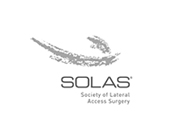Degenerative Disc Disease
Degenerative disc disease is a condition where the inter-vertebral disc, the gel-like material between the vertebrae, has begun to wear out due to aging, repetitive stress, smoking, injury, formation of bone spurs or obesity.
What are the symptoms of degenerative disc disease?
Symptoms vary from person to person. Some patients have no pain while others may experience severe pain. Depending upon the location of the affected disc the condition may cause:
- Neck or arm pain
- Back pain
- Numbness or tingling in the arms or legs
- Pain in the thighs and buttocks
The pain is aggravated by movements such as bending, lifting or twisting.
How is degenerative disc disease diagnosed?
Degenerative disc disease is usually diagnosed based on medical history, a physical examination and neurological examination. Diagnostic imaging techniques such as X-rays, CT scan or MRI scans may be employed to confirm the diagnosis.
Non-surgical treatment options such as medications (pain medication, narcotic medication, NSAIDs, muscle relaxants, anti-depressants), rest, exercise, a spinal block and physical therapy may be recommended when there is no evidence of nerve root compression or muscle weakness. Surgery is considered when conservative treatment options fail to relieve the symptoms over a period of time. Spinal decompression along with a discectomy and fusion is usually performed to remove the affected disc and fuse the adjoining vertebrae in order to stabilize the spine.






